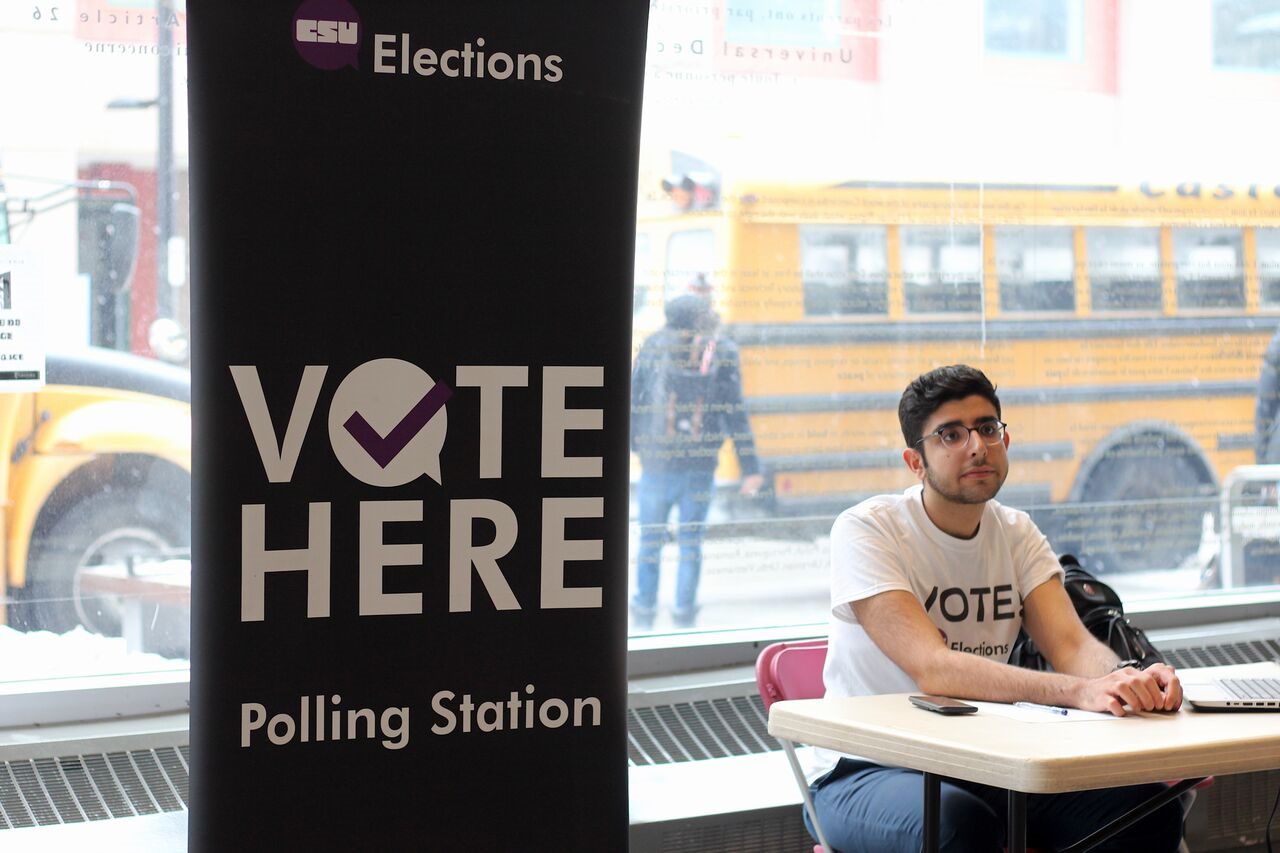Nine councillors, two referendums approved with nearly 2,700 votes cast
Nine new councillors and two referendum campaigns are victorious following the Concordia Student Union (CSU) by-elections.
In a turnout that was nearly double that of the last general election, students voted overwhelmingly in favour of online voting, with over 2,400 votes in favour, just 107 opposed and 158 abstentions.
“I could not believe it,” said Arts and Science Councillor Chris Kalafatidis, who led the campaign in favour of online voting.
As for future elections, Kalafatidis said he would like to stay with Simply Voting, the online voting system used by the CSU, but would also be open to having other companies bid on the contract.
This does not mean the union is mandated to implement online voting. “The referendum question is not binding,” CSU General Coordinator, Sophie Hough-Martin, told The Concordian. “Technically, because we used it for the by-elections, I suspect that council will just mandate us to implement it for the March general elections as well.”
However, she said “going forward, we would have to have a binding referendum that actually supports the permanent implementation [of online voting] as a replacement of paper ballots.”
In a hotly contested race for the open Arts and Science councillor seat, Jane Lefebvre Prévost beat out her five opponents with 30.8 per cent of the vote. Her runner up, Victoria Bolanos-Roberts, earned 26.2 per cent. “The by-election hasn’t been the smoothest logistically-speaking, but I’m really proud of everyone who ran,” said Lefebvre Prévost. “Candidates did their best to support one another throughout it.” She hopes to introduce mandatory anti-racism workshops for all councillors during her term.
Gina Cody School of Engineering and Computer Science (GCS) candidates Eduardo Malorni and Patrick Lavoie won the two open GCS seats in an eight-person race. “What helped me the most [was] definitely the support of all the people and friends I’ve met at the GCS,” Lavoie said. “This was pretty clearly a close race, and every vote mattered.” Lavoie hopes to acquire more funding for GCS student societies and improve transparency within the union.
Eliza McFarlane defeated her opponent, Pat Jouryan Martel, to win the Fine Arts seat. All five candidates from the John Molson School of Business were elected to council.
Finally, students approved the union’s proposed fee levy restructuring, with over 1,300 students (or 62.5 per cent of voters) voting in favour of the proposed changes. Starting in the summer semester, the fees for operations, clubs and the Advocacy Centre will go up by 20 cents, 6 cents and 10 cents, respectively. To compensate, the fee levy for the Student Space, Accessible Education and Legal Contingency Fund, which funds projects like the Woodnote Housing Cooperative, will be reduced by 36 cents.
“It’s certainly a relief, I’ve gotta say,” said Finance Coordinator John Hutton, who introduced the referendum. “I was confident that it would pass, but until I actually saw the numbers in front of me, I wasn’t willing to let myself calm down.”
Hutton said the restructured fee levies will correct several of the union’s structural deficits as soon as they are implemented. Although the change was meant to take effect this semester, the postponement of the by-elections last fall means restructuring will only happen in the summer semester.
Regarding online voting, Hutton said the savings from electronic voting will likely leave the union under budget for its campaigns expenses for the year, even though its by-elections had to be repeated. In particular, the union saved about $17,000 that would have otherwise been spent on election security in its second by-election.
Opinions differed as to what was responsible for the increased voter turnout. Almost 2,700 students voted in the by-election, representing 7.4 per cent of all undergraduate students. By contrast, the March 2018 general election only drew around 1,400 voters.
Kalafatidis said the online voting system was entirely responsible for the increased voter turnout. “I do not believe any other variable had a significant impact,” he said. “Maybe a really small one, but that’s it.”
Hough-Martin said it was the number of candidates, especially in Arts and Science and the GCS, that generated interest in the election.
Arts and Science Councillor Patrick Quinn, who chaired the CSU’s elections and participation committee, said it was a combination of both. He said the email each member was sent with links to vote played a major part in increasing voter participation.
Despite the increased turnout, Hough-Martin said the union has a long way to go to improve voter turnout. “We would like to be seeing numbers in the double digits.”
“I think that there is still work to be done in voter engagement, and to get people more involved with the student union,” said Hough-Martin.
Photo by Hannah Ewen.




